 The bugle and the trumpet look quite similar.
The bugle and the trumpet look quite similar.
And they do, in fact, have many similarities.
But there are also significant differences between the bugle and the trumpet.
The biggest is in versatility, which results in the trumpet being used in various different styles and genres.
The bugle, on the other hand, is much more limited in its application.
Keep reading to learn exactly how the compare and differ, including the advantages of each and to which type of player each on is more suited.
Table of Contents
Trumpet Vs Bugle
Let’s begin our comparison by looking at each instrument individually, before going into the differences and similarities. Then we’ll look at the advantages of each and determine which one is better suited for you.
What Is A Bugle?
The bugle is a musical wind instrument made of metal. It is a smaller instrument than the trumpet, having a straight and oval tube. It only consists of a mouthpiece that is used to play and has a cone in its final part.
It is an instrument of the brass-wind family, well known for its use in the military field, and whose sound is produced as a result of the vibration of the performer’s lips on the mouthpiece when blowing.
Bugle mouthpieces have a conical shape that is quite a bit deeper than that of a trumpet mouthpiece. This results in a lower and darker sound.
After various investigations, it was concluded that bugles (as we know them today) were already used in Medieval Europe, although they were a shorter variant. It was later folded into an S shape, and it was in 1500 when it acquired a more elongated loop.
The sound they produce is very high-pitched, which is propelled by the air that the performer blows.
Its sound is similar to that of the trumpet, but whether it has a lower or higher tonality depends on the expulsion of air that the musician performs when playing it. Therefore, it is always advised that you be relaxed before playing this instrument.
What Is A Trumpet?
The trumpet is one of the oldest known instruments. In ancient times men used instruments made with natural means such as reeds or animal horns to communicate. We can attribute the origins of this instrument to those times.
Later, the discovery of metals played a very important role, since it provided the appropriate materials for the construction of the trumpet as we know it today.
At the same time, it gave it a better sound and was modeled towards today’s looks, although, for the moment, it still retained the horn shape.
Today, trumpets have pistons (or valves) that are pressed to make melodies, while blowing air into the mouthpiece. There are several different types and sizes, like the tiny pocket trumpet.
This provides much more flexibility in playing. The wonderful trumpet is one of the most versatile brass instruments, and therefore used in many different settings and music genres.
Difference Between Bugle And Trumpet
There are several types of bugles but the two standard ones are the short bugle in C and the long bugle in C. Those two we can see in many orchestras and bands.
The only difference between these two bugles is that the short one has the tube wound in two turns as opposed to the long bugle that only has one turn.
A mechanism was added to the short bugle that made it possible for the air to vary its path, thus doubling the number of notes that could be produced.
Traditionally, the bugle gave a very limited series of notes. The lowest was the G note on the second line, up to the G which is just above the last line. In other words, a register of one octave. This means that a regular bugle normally gives you eight notes to play.
Nowadays, due to the impressive progress of musicians, it is possible to take this instrument to heights that were unthinkable just a couple of decades ago.
Players can now reach more than two octaves in the register of this instrument. This allows them to play practically all the notes of the scale in its high register.
Its sound is dark and sharp. It is an instrument closer to the flugelhorn family. Due to its conical tube, the bugle has a sweeter and darker sound, unlike the bright sound of the trumpet with its cylindrical tube.
The trumpet is the smallest and sharpest instrument in the brass family. It consists of a partially cylindrical tube with a small section that progressively widens until it reaches the end.
It has 3 pistons or valves, which when activated, connect the additional pumps to the main tube, thus widening the range of tones. The pistons provide much more versatility and many more tones in playing than the bugle which has no pistons.
Similarities Between The Bugle And Trumpet
The bugle belongs to the same family as the trumpet. These two different instruments are the most used in brass musical bands, also taking the primary role in military bands. For this reason, they are currently indispensable in rustic celebrations or group competitions.
Both instruments are played by blowing air through the mouthpiece. Although the entire process of causing these two instruments to emit the sound occurs in our body, it is a common misconception to think that just blowing the instrument will make sounds.
The sound is actually produced on our lips, by making them vibrate. That vibration is what causes a certain tone to sound like that in these two instruments. Therefore, it is necessary to know what technique the instrument requires to play it.
Advantages Of Bugles
The bugle is the predecessor of all brass instruments and has quite a history. The origin of the bugle goes back to the origins of human history.
It was originally made with horns of numerous animals (bulls or oxen), which were hunted for food. Antlers were used in some cases as well. Over the years, we began using other materials to make the bugle.
Traditionally, the bugle was a minor instrument, almost always used in military bands, so the material used to make them has always been a cheap material, such as brass.
Nowadays due to the important boom that this beautiful instrument has taken, bugles are manufactured with higher quality materials, resulting in much higher-quality instruments.
This instrument was most used in ancient times. Two very well preserved bugles were found in the tomb of Tutankhamun.
There was also another type of bugle which was used by the Ancient Greeks, widely used in the Olympic Games. Naturally, there are data that prove the existence of bugles in the Roman Empire. All in all, it is an instrument with a huge tradition.
The bugle is still easier to learn than arguably all the other brass instruments, which makes it a perfect starting point in your musical career.
Advantages Of Trumpets
You don’t need to look far to see how the trumpet is an instrument that is part not only of the symphony orchestra but also of a large number of groups of any musical style.
Most people who are not directly linked to classical music, surely recognize it in any type of popular music. Thus, we can find it in professional music bands in cities or armies around the world.
We also see it in a large number of bands of amateur musicians. Jazz and blues have had extensive use of trumpets throughout the years.
Other types of popular music where the trumpet is indisputable are undoubtedly the famous Mexican mariachis, or the tireless Caribbean salsa bands with their dance rhythms, such as the famous pasodoble. Trumpets can also be found on many occasions in pop music.
The history of the trumpet in jazz cannot be highlighted enough for its great influence. Jazz not only popularized the instrument but also provided new technical and sound resources. Today there is a wide range of trumpets and accessories to suit both the taste of the player and the particular style of music.
Who Should Get A Bugle (And Why)?
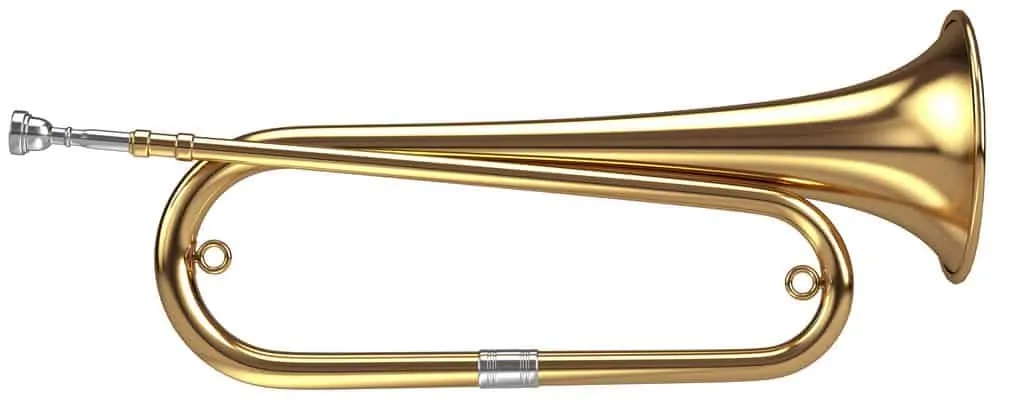
Due to its simplicity of playing, the bugle is quite good for beginners who wish to enter the world of brass instruments. It generally has no pistons so the only technique you need is with your mouth only.
Besides, not many people play the bugle today, and therefore it is quite easy to join bands and orchestras with it. There simply is not the same level of competition as with a more popular instrument like the trumpet.
Be that as it may, due to its simplicity, there aren’t many things you can do with the bugle and therefore it is mostly used in marching bands and military events.
Its dark tone is something else, and people with a specific taste for this kind of sound will definitely enjoy playing the bugle immensely.
Plus, it is possible to learn it relatively quickly if you have “an ear” for wind instruments.
It is always recommended for amateur playing (for yourself) because it can be challenging to have a professional career with a bugle. For that purpose, the trumpet is a much better choice.
Who Should Get A Trumpet (And Why)?
In comparison with the bugle, the trumpet is much harder to play and learn. There is a big advantages in learning it after playing the bugle first. Of course, it is possible and quite common to learn the trumpet without learning the bugle.
By having pistons, the trumpet is quite versatile and can be played incredibly fast. It is an instrument very suitable for talented people with great techniques that can become band frontmen.
Besides, this versatility in playing enables the trumpet to play a large role in various genres, from classical music to jazz, blues, and fusion.
Therefore, the trumpet is meant for people who are quite able to show off their skills and who would like to play various music with one instrument, either professionally or amateur.
Bugle Vs Trumpet: Final Thoughts
The bugle is a much easier instrument to play, but it is also much more limited. It is a great introduction to brass instruments, but most musicians will eventually want to learn to play the trumpet or another more versatile brass instrument.
But don’t let that discourage you, if you have taken a liking to the bugle. Its applications might be limited, but they are not zero. There is a need for bugles, and since it is a less popular instrument, the competition is much lower than with the trumpet.
You also have the possibility of buying plastic instruments of both types. Our comparison of the best plastic trumpets includes a bugle as well.
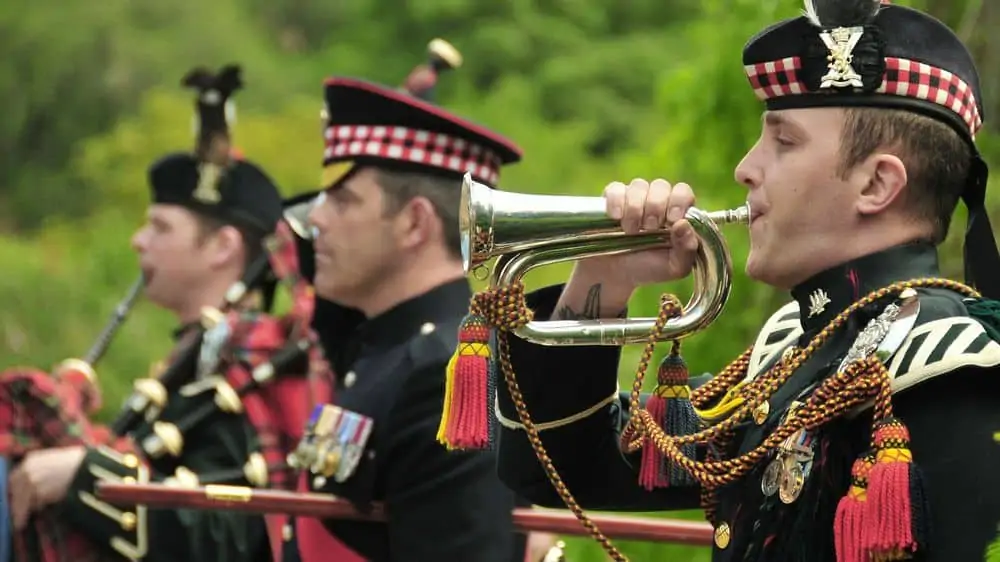

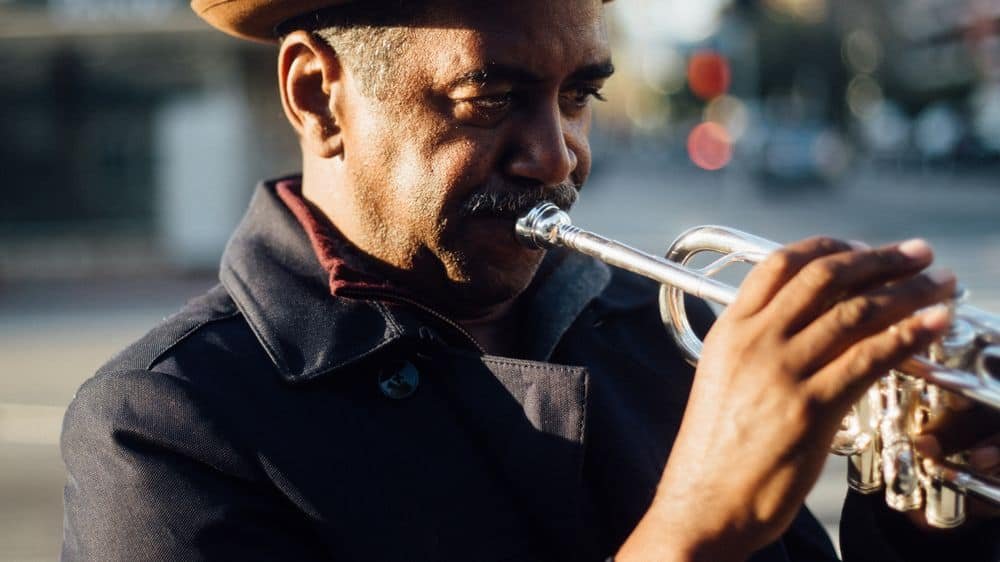
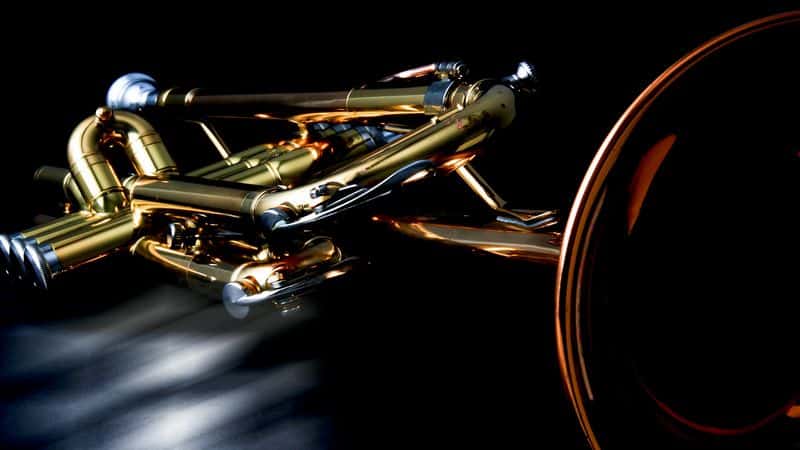
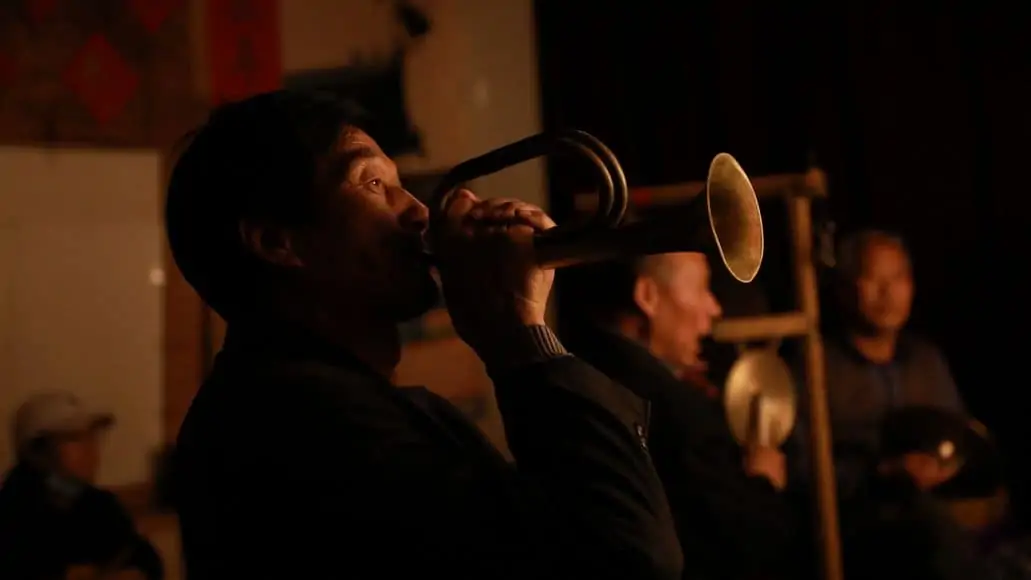

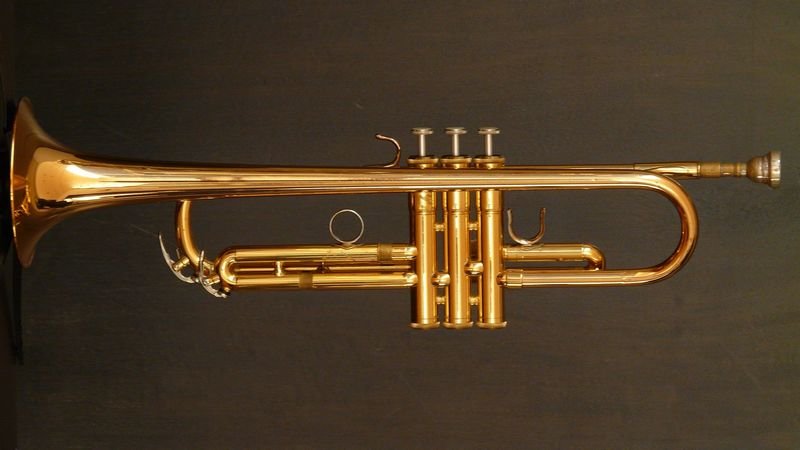
Your header image contains a bugle and a flugelhorn, not a trumpet.
I take exception with one of your statements: “In comparison with the bugle, the trumpet is much harder to play and learn.” Response: If you don’t use the valves of a trumpet (put them in any configuration you want and leave them that way), what you have is a bugle, which makes learning to play the trumpet no more difficult than learning to play a bugle. The hard ‘learning’ part with the trumpet comes into play when you have to learn all the valve fingerings (in conjunction with slight changes in embouchure) so you can make the additional notes that a bugle can’t. The ONLY reason why learning to play a bugle might be simpler for the beginner is because (with no valves) it is less intimidating than the trumpet.
Fair point.